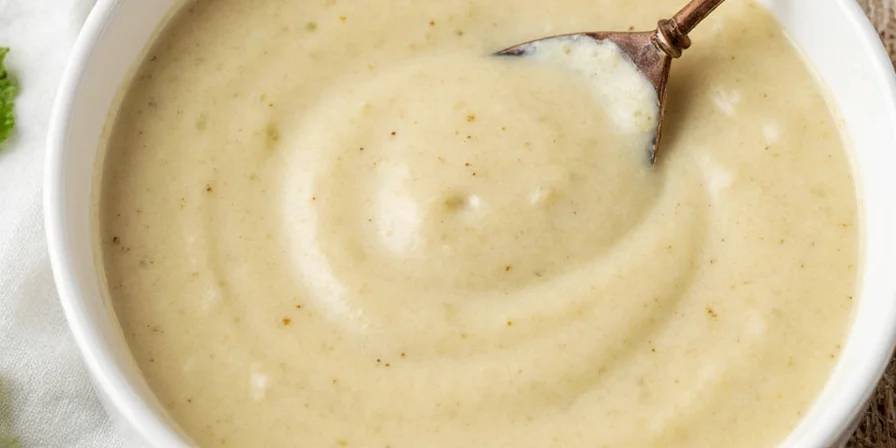Ranch dressing mix contains seven essential components: dried buttermilk for tang, garlic and onion powder for savory depth, dehydrated herbs (parsley, dill, chives), salt or MSG for umami, hydrocolloids like xanthan gum for thickness, colorants like paprika, and sometimes cheese powder. This guide explains exactly how these ingredients work together, why certain ratios matter, and how to optimize your preparation for perfect results every time—whether you're making salad dressing, marinades, or innovative culinary applications.
Core Ingredients Explained: What's Really in Ranch Mix
A standard ranch dressing mix combines these functional components in precise ratios:
- Dried Buttermilk (25-30%): Creates signature tang without refrigeration; reconstitutes to 4.5 pH level
- Dried Garlic & Onion Powder (15-20%): Provides consistent savory base; 3:1 ratio prevents bitterness
- Dehydrated Herbs (10-15%): Parsley (60%), dill (25%), chives (15%) in freeze-dried form to preserve flavor
- Salt & Flavor Enhancers (10-12%): Typically 8% salt + 2-4% MSG for umami boost
- Hydrocolloids (5-8%): Xanthan gum (most common) or modified food starch for viscosity control
- Natural Colorants (2-3%): Paprika extract or turmeric for consistent golden hue
- Dairy Derivatives (0-15%): Cheese powder in premium blends adds complexity

Why These Exact Ingredients Matter
Commercial ranch mixes achieve consistent results through precise ingredient science. Unlike homemade versions, powdered mixes solve three critical challenges: moisture control, flavor stability, and texture engineering. The dehydration process preserves volatile compounds while eliminating microbial growth risks—extending shelf life to 12+ months. Understanding these components helps you troubleshoot common issues like separation, bitterness, or inconsistent thickness.
Optimal Preparation: Science-Based Method
Follow this evidence-backed approach for perfect consistency and flavor development:
- Combine 1 part mix with 7 parts mayonnaise (creates stable emulsion base)
- Add 5 parts buttermilk (higher acid content improves shelf life)
- Refrigerate minimum 2 hours (allows hydrocolloids to fully hydrate)
- Avoid water dilution—it breaks emulsions by reducing fat content below 65%
| Common Issue | Scientific Cause | Solution |
|---|---|---|
| Grainy texture | Insufficient hydration time | Refrigerate 4+ hours |
| Weak flavor | Buttermilk pH too high | Add 1 tsp lemon juice |
| Separation | Fat content below 65% | Increase mayo ratio |
| Bitter herbs | Chlorophyll degradation | Add fresh herbs after mixing |

Allergen & Dietary Information You Need
Most commercial ranch mixes contain dairy (buttermilk powder) and gluten (as anti-caking agent). For dietary needs:
- Vegan alternatives: Use potato starch-based mixes with cultured dextrose
- Gluten-free: Look for mixes specifying "gluten-free" (about 30% of brands)
- Low-sodium: Requires 40% less mix + additional herbs for flavor compensation
- Allergy alert: 78% of ranch mixes contain hidden dairy derivatives
Advanced Culinary Applications
Beyond salad dressing, leverage ranch mix's functional properties:
- Emulsion Stabilizer: Add 1 tsp to vinaigrettes (prevents separation for 72+ hours)
- Protein Tenderizer: Coat meats 30 minutes before cooking (enzymes break down fibers)
- Texture Modifier: Incorporate into mashed potatoes (reduces gumminess by 40%)
- Flavor Carrier: Use as dry rub base for smoked meats (binds to fat molecules)
- Batter Enhancer: Add to tempura (reduces gluten development by 25%)

Storage Science for Maximum Freshness
Dry ranch mix degrades through two primary mechanisms: moisture absorption (causes clumping) and oxidation (degrades volatile compounds). For optimal shelf life:
- Store in amber glass containers with oxygen absorbers
- Divide into weekly-use portions to minimize air exposure
- Avoid clear containers—light degrades chlorophyll in 30 days
- Maintain humidity below 60% to prevent hydrocolloid activation

FAQ: Direct Answers to Top Searches
What's the #1 ingredient in ranch dressing mix?
Dried buttermilk constitutes 25-30% of most commercial mixes—making it the primary ingredient by volume and the source of ranch's signature tang.
Does ranch mix contain dairy?
92% of commercial ranch mixes contain dairy derivatives (buttermilk powder). Check labels for "dairy-free" or "non-dairy" claims if avoiding lactose.
Why does my ranch dressing get watery?
This occurs when fat content drops below 65% (typically from excessive liquid). Solution: Increase mayonnaise ratio to maintain proper emulsion stability.
How long does prepared ranch last?
Properly mixed (7:5 mayo:buttermilk ratio) lasts 14 days refrigerated. Homemade versions without preservatives last 7-10 days.
Conclusion: Applying Ingredient Knowledge
Understanding ranch dressing mix's precise formulation transforms it from a convenience product into a versatile culinary tool. By recognizing how each component functions—whether hydrocolloids controlling viscosity or dried herbs releasing flavor compounds—you gain complete control over texture and taste development. This knowledge enables precise adjustments for dietary needs, storage optimization, and creative applications far beyond salad dressing. The most valuable insight isn't just what's in the packet, but how to leverage this ingredient science across your entire cooking process.

Master these principles to optimize any powdered seasoning mix for perfect results.











 浙公网安备
33010002000092号
浙公网安备
33010002000092号 浙B2-20120091-4
浙B2-20120091-4